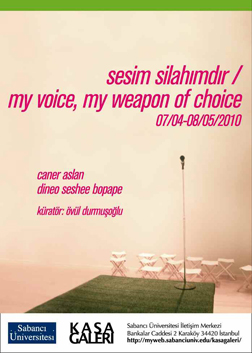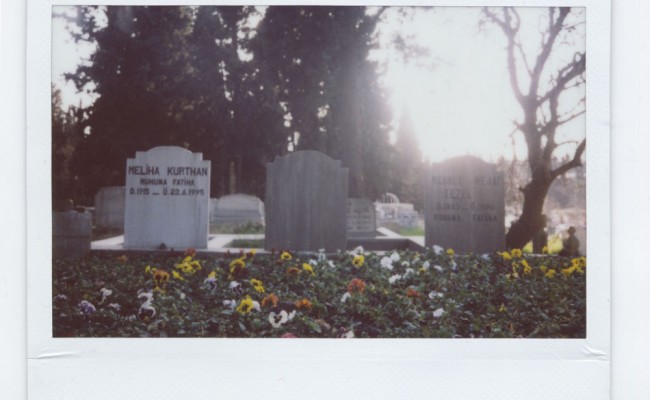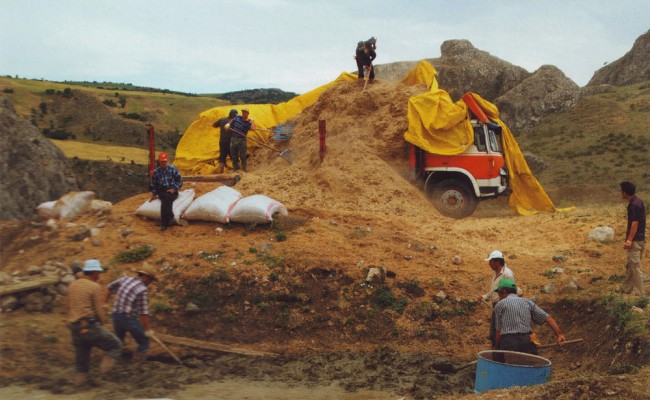Caner Aslan
Dineo Seshee Bopape
Curator: Övül Durmuşoğlu
Sesim silahimdir/ My voice, my weapon of choice takes its title from the opening line of ‘This is’ by the cult disco queen Grace Jones. She was on tour last year for her recent album titled Hurricane, which includes the particular song. When she announces this line, we who love her, clearly understand what she means. For Grace Jones has carried herself proudly for who she is, being a muse for many by doing that.
The phrase ‘weapon of choice’ literally stands for signature weapon; that is a weapon that makes a character so famous by using it. Being especially designed for them or enchanted, these weapons can only be used by heroes. They empower and transform them like the power sword of He-Man. It is not only associated with computer games of intense tactical takes but also a famous Fat Boy Slim song with its unforgettable video played by Christopher Walken. To some it can also echo Subcommandante Marcos saying ‘Our Word is Our Weapon’. To the children that grew up during eighties, ‘weapon of choice’ carries the confronting voice of eighties facing conservative measures taken by governments. The phrase is not directly translatable to Turkish. The past imagination of the country is not contained in the contemporary language, which precludes a certain precision. This fact is also connected to the split nature of history. When the phrase is literally translated, it carries a sort of military accent that we try to get rid of for many years.
In the framework of the exhibition bringing together Dineo Seshee Bopape (Polokwane, 1981) and Caner Aslan (Malatya, 1981) the phrase echoes the power of choosing, that is how ordinary things can be transformed into vociferous objects of confrontation by being chosen. In the crowded bubble world of contemporary art, differentiating singular voices becomes a fundamental weapon of choice for the artists. Both of the artists realizing Sesim Silahimdir/My Voice, My Weapon of Choice have a curious relationship with mundane things and their functions. When they make use of everyday objects as part of their particular storytelling, they become obsolete and enchanted at the same time with the potential of creating new scenarios. By making those choices from all accessible imagery that Boris Groys calls to have ‘equal aesthetic rights’, they introduce their audience to a variety of connotations, personal and collective, to relate with the world. “The source of the impact that these images exerted on subsequent art production,” says Groys explaining this dynamic logic “lies not in their exclusivity, but instead in their very capacity to function as mere examples of the potentially infinite variety of images.” While Bopape searches for the layers of more personal in her seemingly frivolous, complex playground spaces, Aslan plays with the ways of looking at displaced memories proposing his own archaeology for past and future in now.
...
Thus, Kasa Galeri’s three-roomed space is employed for a few layers of narrative. The passing room between Bopape’s space of possible reminiscences and Aslan’s archive of potential future scenarios will be a space of encounter and confrontation where artists will analyze each other’s weapons of choice. Artists propose an almost dialectical relationship with each other in terms of creating milieus for the selected images to come together. The attempt of conceptual construction about erasure and re-writing that opens the exhibition meets the playful mannerism of evocation in the form of an open language.



